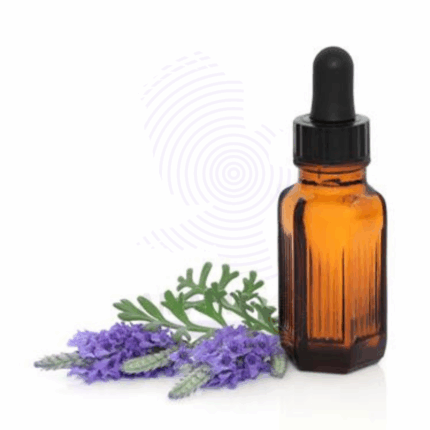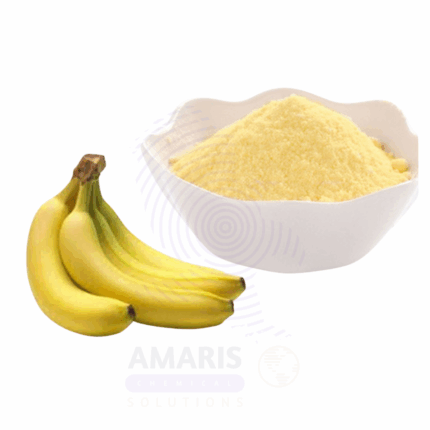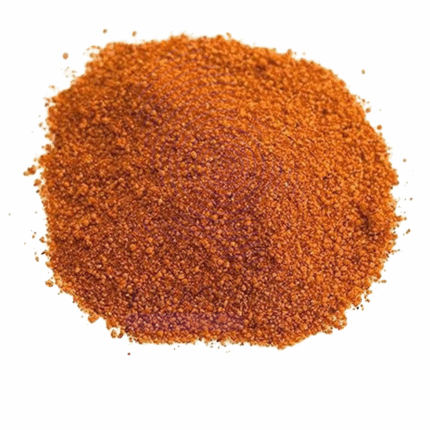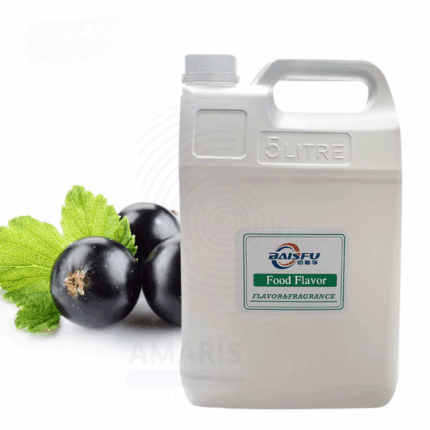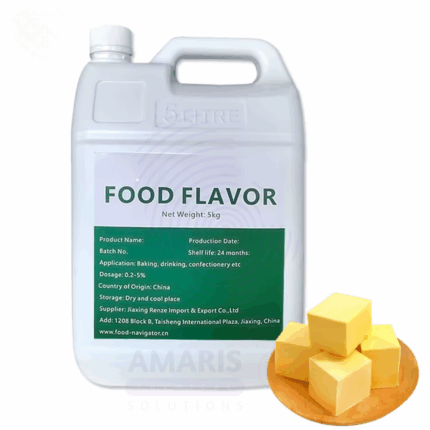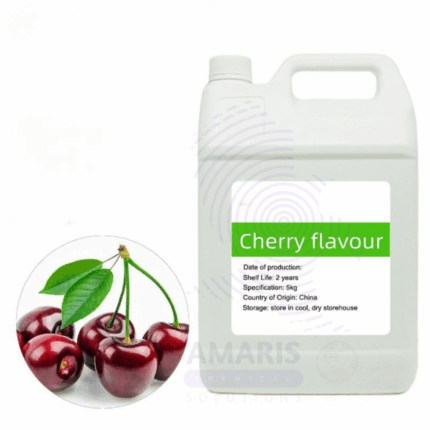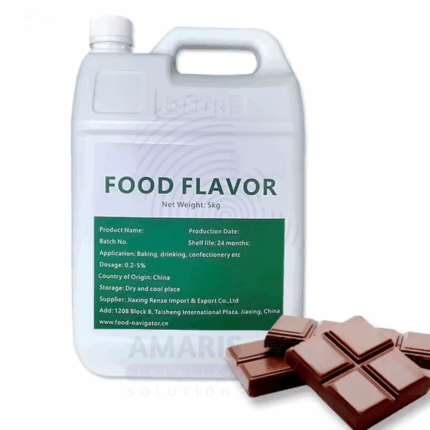Pure Vanillin
Pure Vanillin is a fine, crystalline powder recognized as the principal flavor compound derived from vanilla beans. It imparts a sweet, creamy vanilla aroma and taste, making it a critical ingredient in food, pharmaceutical, and cosmetic formulations. This high-purity grade is suitable for direct use in consumables and fragrance products.
Primary Uses
Food & Beverage Industry
Used extensively as a flavoring agent in baked goods such as cakes, cookies, and pastries.
Adds vanilla flavor to chocolates, ice creams, yogurts, and other dairy-based desserts.
Incorporated in beverages including flavored coffees, teas, and soft drinks.
Used in confectionery items like candies, chewing gums, and syrups to enhance flavor.
Applied in savory products like sauces and dressings to balance flavor profiles.
Pharmaceuticals
Used in medicinal syrups, cough remedies, and throat lozenges to mask bitter tastes.
Employed as a flavoring agent in chewable tablets and oral care products.
Cosmetics and Personal Care
Added to perfumes, colognes, and scented lotions for its characteristic vanilla scent.
Incorporated into soaps, shampoos, and creams to provide aromatic appeal.
Secondary Uses
Chemical Intermediate
Used in the synthesis of more complex flavor and fragrance molecules.
Household Products
Added to air fresheners, cleaning products, and candles for fragrance enhancement.
Research & Development
Utilized as a standard reference material in analytical testing of flavors and fragrances.
Food Packaging Industry
Used in active packaging materials to impart mild aroma and mask odors.
Animal Feed
Added as a palatability enhancer in certain animal nutrition products.
Basic Identification Attributes
Chemical Name (IUPAC): 4-Hydroxy-3-methoxybenzaldehyde
Common/Trade Name: Pure Vanillin
CAS Number: 121-33-5
HS Code: 29123200
Synonyms: Vanillin, vanilla aldehyde
Physical & Chemical Properties
Physical State: Fine crystalline powder
Color & Odor: White to pale yellow; characteristic vanilla aroma
Solubility: Soluble in alcohol, ether; slightly soluble in water
Melting Point: 81–83 °C
Density: Approx. 1.05 g/cm³
Safety & Hazard Attributes
GHS Classification: Not classified as hazardous; may cause mild irritation
Toxicity: Low toxicity; avoid inhalation and prolonged skin contact
Exposure Limits: Refer to safety data sheet for guidance
Storage & Handling Attributes
Storage Conditions: Store in cool, dry, well-ventilated area away from light and heat sources
Container Type: Sealed plastic or glass containers to maintain purity
Shelf Life: Typically 24 months if stored properly
Handling Precautions: Use gloves and dust mask to prevent irritation and inhalation
Regulatory & Compliance Attributes
Complies with FDA, EFSA, and other international food safety standards
Generally Recognized As Safe (GRAS) for use in food and beverages
Manufactured in GMP-certified facilities
Environmental & Health Impact
Biodegradability: Biodegradable under typical environmental conditions
Ecotoxicity: Low risk to aquatic organisms
Bioaccumulation: Not significant
PPE Required: Gloves, goggles, and dust masks recommended when handling powder
Handling Guidelines: Avoid dust formation; work in well-ventilated areas
First Aid Measures
Inhalation: Move to fresh air; seek medical advice if respiratory irritation occurs
Skin Contact: Wash thoroughly with soap and water; seek medical advice if irritation persists
Eye Contact: Rinse with plenty of water for 15 minutes; get medical attention if irritation continues
Ingestion: Rinse mouth; do not induce vomiting; seek medical attention
Firefighting Measures
Fire Hazards: Combustible solid; avoid ignition sources
Extinguishing Media: Water spray, foam, dry chemical, or CO₂
Special Precautions: Use protective equipment and self-contained breathing apparatus if needed
Hazardous Combustion Products: Carbon oxides and aromatic compounds


 Preservatives(food)
Preservatives(food) Flavor Enhancers
Flavor Enhancers Acidulants
Acidulants Sweeteners
Sweeteners Antioxidants
Antioxidants Colorants(food)
Colorants(food) Nutraceutical Ingredients (food)
Nutraceutical Ingredients (food) Nutrient Supplements
Nutrient Supplements Emulsifiers
Emulsifiers
 Collectors
Collectors Dust Suppressants
Dust Suppressants Explosives and Blasting Agents
Explosives and Blasting Agents Flocculants and Coagulants
Flocculants and Coagulants Frothers
Frothers Leaching Agents
Leaching Agents pH Modifiers
pH Modifiers Precious Metal Extraction Agents
Precious Metal Extraction Agents
 Antioxidants(plastic)
Antioxidants(plastic) Colorants (Pigments, Dyes)
Colorants (Pigments, Dyes) Fillers and Reinforcements
Fillers and Reinforcements Flame Retardants
Flame Retardants Monomers
Monomers Plasticizers
Plasticizers Polymerization Initiators
Polymerization Initiators Stabilizers (UV, Heat)
Stabilizers (UV, Heat)
 Antifoaming Agents
Antifoaming Agents Chelating Agents
Chelating Agents Coagulants and Flocculants
Coagulants and Flocculants Corrosion Inhibitors
Corrosion Inhibitors Disinfectants and Biocides
Disinfectants and Biocides Oxidizing Agents
Oxidizing Agents pH Adjusters
pH Adjusters Scale Inhibitors( water)
Scale Inhibitors( water)
 Antioxidants(cosmetic)
Antioxidants(cosmetic) Emollients
Emollients Fragrances and Essential Oils
Fragrances and Essential Oils Humectants
Humectants Preservatives
Preservatives Surfactants(cosmetic)
Surfactants(cosmetic) Thickeners
Thickeners UV Filters
UV Filters
 Fertilizers
Fertilizers Soil Conditioners
Soil Conditioners Plant Growth Regulators
Plant Growth Regulators Animal Feed Additives
Animal Feed Additives Biostimulants
Biostimulants Pesticides (Herbicides, Insecticides, Fungicides)
Pesticides (Herbicides, Insecticides, Fungicides)
 Active Pharmaceutical Ingredients (APIs)
Active Pharmaceutical Ingredients (APIs) Excipients
Excipients Solvents(pharmaceutical)
Solvents(pharmaceutical) Antibiotics
Antibiotics Antiseptics and Disinfectants
Antiseptics and Disinfectants Vaccine Adjuvants
Vaccine Adjuvants Nutraceutical Ingredients (pharmaceutical)
Nutraceutical Ingredients (pharmaceutical) Analgesics & Antipyretics
Analgesics & Antipyretics
 Analytical Reagents
Analytical Reagents Solvents(lab)
Solvents(lab) Chromatography Chemicals
Chromatography Chemicals Spectroscopy Reagents
Spectroscopy Reagents microbiology-and-cell-culture-reagents
microbiology-and-cell-culture-reagents Molecular Biology Reagents
Molecular Biology Reagents Biochemical Reagents
Biochemical Reagents Inorganic and Organic Standards
Inorganic and Organic Standards Laboratory Safety Chemicals
Laboratory Safety Chemicals Specialty Laboratory Chemicals(Special Laboratory Equipment)
Specialty Laboratory Chemicals(Special Laboratory Equipment)
 Demulsifiers
Demulsifiers Hydraulic Fracturing Fluids
Hydraulic Fracturing Fluids Scale Inhibitors(oil)
Scale Inhibitors(oil) Surfactants(oil)
Surfactants(oil) Drilling Fluids
Drilling Fluids
 Dyes and Pigments
Dyes and Pigments Bleaching Agents
Bleaching Agents Softening Agents
Softening Agents Finishing Agents
Finishing Agents Antistatic Agents
Antistatic Agents
 Admixtures
Admixtures Waterproofing Agents
Waterproofing Agents Sealants and Adhesives
Sealants and Adhesives Curing Compounds
Curing Compounds Concrete Repair Chemicals
Concrete Repair Chemicals Anti-Corrosion Coatings
Anti-Corrosion Coatings
 Surfactants(cleaning)
Surfactants(cleaning) Builders
Builders Enzymes
Enzymes Solvents (Cleaning)
Solvents (Cleaning) Fragrances
Fragrances
 Electronic Chemicals
Electronic Chemicals Catalysts
Catalysts Lubricants
Lubricants Photographic Chemicals
Photographic Chemicals Refrigerants
Refrigerants Automotive chemicals
Automotive chemicals Pyrotechnic Chemicals
Pyrotechnic Chemicals
 Biodegradable Surfactants
Biodegradable Surfactants Bio-based Solvents
Bio-based Solvents Renewable Polymers
Renewable Polymers Carbon Capture Chemicals
Carbon Capture Chemicals Wastewater Treatment Chemicals
Wastewater Treatment Chemicals
 Pigments
Pigments Solvents(paint)
Solvents(paint) Specialty Coatings
Specialty Coatings Binders/Resins
Binders/Resins Additives
Additives Driers
Driers Anti-Corrosion Agents
Anti-Corrosion Agents Functional Coatings
Functional Coatings Application-Specific Coatings
Application-Specific Coatings
 Fresh Herbs
Fresh Herbs Ground Spices
Ground Spices Whole Spices
Whole Spices Spice Blends
Spice Blends Dried Herbs
Dried Herbs
 Leavening Agents
Leavening Agents Dough Conditioners
Dough Conditioners Flour Treatments
Flour Treatments Fat Replacers
Fat Replacers Decoratives
Decoratives Preservatives(baking)
Preservatives(baking)
 Plasticizers & Softeners
Plasticizers & Softeners Reinforcing Agents
Reinforcing Agents Adhesion Promoters
Adhesion Promoters Vulcanizing Agents
Vulcanizing Agents Antidegradants
Antidegradants Blowing Agents
Blowing Agents Fillers & Extenders
Fillers & Extenders Accelerators & Retarders
Accelerators & Retarders

